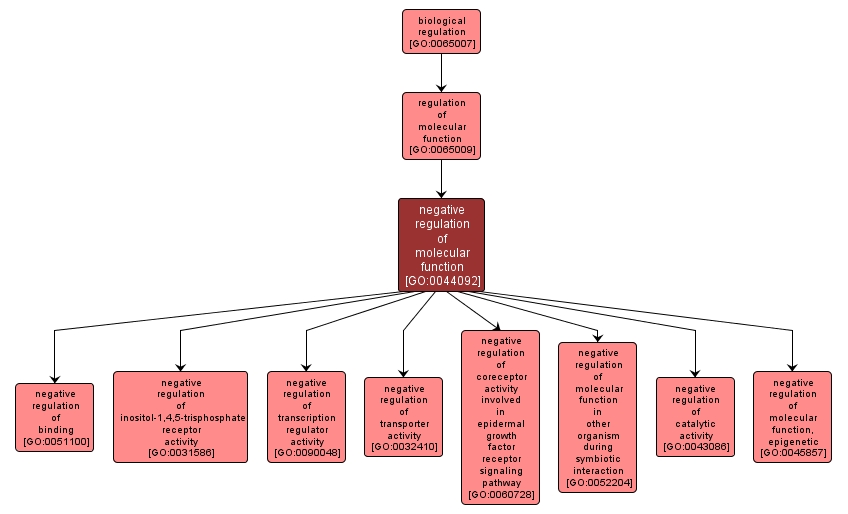GO TERM SUMMARY
|
| Name: |
negative regulation of molecular function |
| Acc: |
GO:0044092 |
| Aspect: |
Biological Process |
| Desc: |
Any process that stops or reduces the rate or extent of a molecular function, an elemental biological activity occurring at the molecular level, such as catalysis or binding. |
|

|
INTERACTIVE GO GRAPH
|














